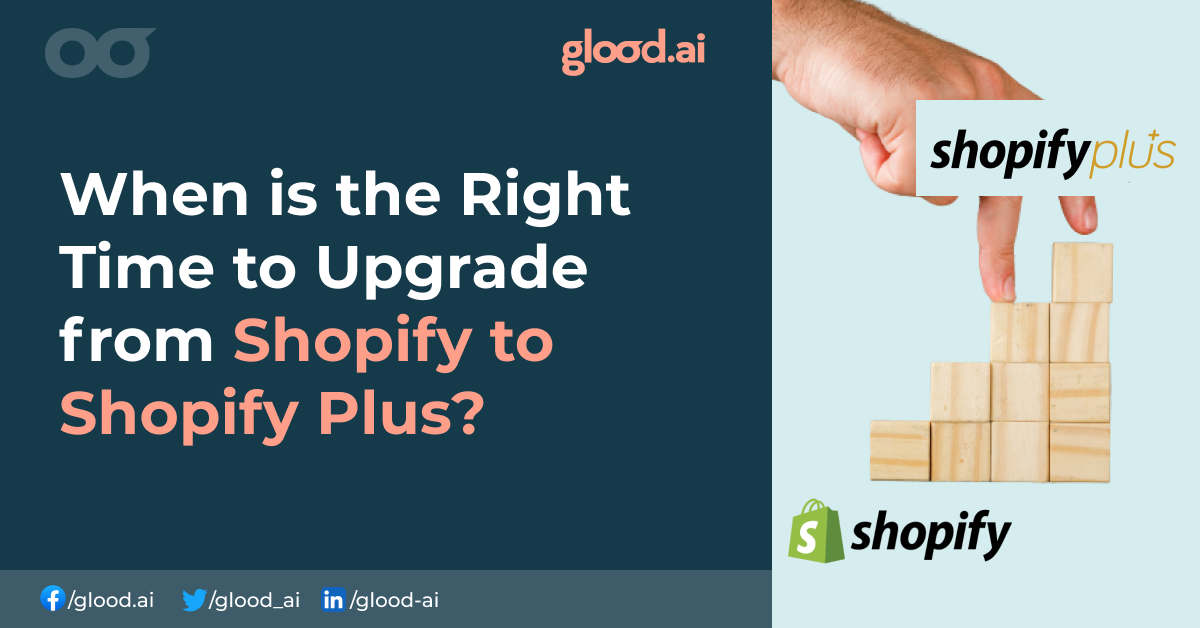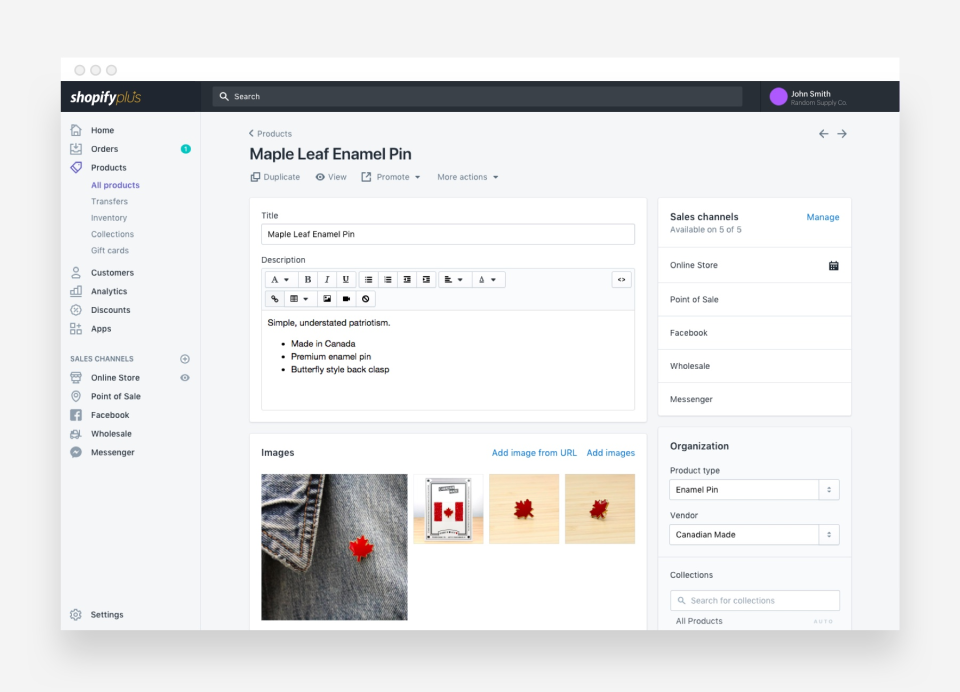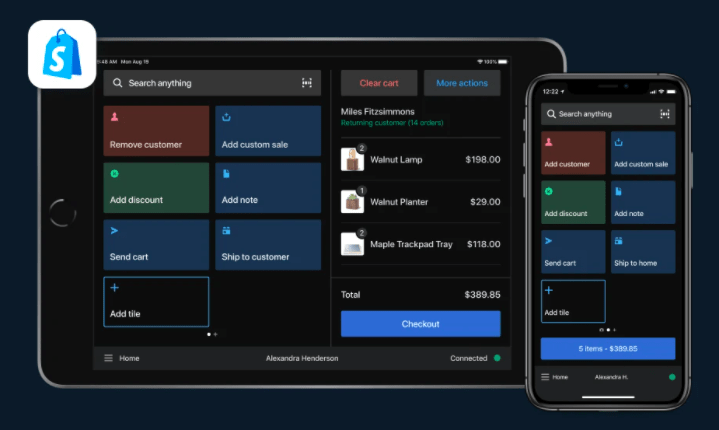How do I make my Shopify website B2B?

- Create custom B2B records to differentiate customers from the beginning. …
- Set up custom pricing for products based on customer / customer labels. …
- Set the level discount (Quantity Break / Volume Discount) based on the number of products in the order. …
- Automatically add tags based on smart customer requirements. …
- Manual request from administrator backend.
Can you do B2B on Shopify? Shopify has a dedicated and integrated B2B sales channel that allows you to set specific customer and product prices. Pricing is key to the success of your business. By making flexible payment options available, you can meet the needs of individual customers.
Do you need Shopify plus for B2B?
Shopify: No B2B or wholesale options. To access a separate wholesale channel, you’ll need to upgrade to Shopify Plus. However, there are solutions you can implement to sell B2B products, such as: Creating discount codes and sending them to wholesale customers.
Can Shopify be used for B2B?
Manage everything from one place, be it B2B or DTC. Focus on growing your brand — without the added complexity — when you use a trading platform for B2B and DTC clients.
Why would I need Shopify plus?
With Shopify Plus, you can access a shipping script to set up more specific rates. This means that you can change your shipping options based on customer labels, the content of a cart, or the minimum order value. In short, Shopify Plus gives you more control over both setup and customization.
How much traffic can Shopify handle?

Shopify can handle a lot of visitors! A lot! We promote more than a million companies that share the same trusted architecture. At every moment, Shopify is managing millions of visitors per minute.
How much does the average Shopify store earn? Earning $ 226 per customer will get you into the top 10%-performing store on the platform, and everything under $ 33 is down to the top 10%. Shopify’s statistics show that by 2020, Shopify’s average store revenue was $ 72 per customer.
What percentage of Shopify stores fail?
Many stores have been built on Shopify, but do you know what percentage of Shopify stores fail? 5% of them reach the goal of success, and the remaining 95% fail.
Why is my Shopify store not selling?
One of the factors behind the lack of sales is the lack of a marketing budget. We don’t just mean the money budget, we mean the time budget. To start making sales, you should expect to invest a lot of time in your marketing strategy.
How many successful Shopify stores are there?
| Country | Live stores using Shopify |
|---|---|
| United States of America | 1,132,470 |
| United Kingdom | 65,167 |
| Australia | 45,403 |
| Canada | 36,860 |
How many items can Shopify handle?
Technically, you can have 100,000 products in your Shopify store. I know, that’s a lot! So to help you find out how many items you need to have in your Shopify store, we’ll look at what to do to help you find the answer, questions, questions, and things to do.
What are the limits of Shopify?
Technically, there are no limits, but Shopify suggests a soft limit of 100,000. More can lead to store and administrator performance issues.
How many products can a Shopify store handle?
According to Shopify customer service, there is a limit of 50,000 products at a time.
What are the limits of Shopify?
Technically, there are no limits, but Shopify suggests a soft limit of 100,000. More can lead to store and administrator performance issues.
What are limitations of Shopify?
In addition, Shopify Plus has a limit of 100 variants per product. This means that you cannot sell more than 100 colors, sizes, or flavors for a particular product. Blocked Payment Function: Although you can change the look of your frontend payment, you can’t add fields or change features.
How many products can we upload to Shopify?
If you don’t run Shopify Plus and have more than 50,000 products and variants in your store, Shopify will allow you to create 1000 new products a day. Boundaries also mean that you can’t load more than 50,000 simple (unmodified) products in your store a day.
Why do I need Shopify plus?

The main difference is that Shopify Plus gives you more flexibility, more support, and more access to your store’s underlying code. While that’s great, it’s also expensive with a minimum monthly cost of $ 2,000.
When should you get Shopify plus? With more than $ 1 million in annual revenue, it’s time to switch to Shopify Plus. The platform is designed for scalability so that your e-commerce store can continue to grow. Not only does Shopify Plus make more sense in terms of growth, it’s also better for you in terms of financial costs.
Why would I need Shopify plus?
With Shopify Plus, you can access a shipping script to set up more specific rates. This means that you can change your shipping options based on customer labels, the content of a cart, or the minimum order value. In short, Shopify Plus gives you more control over both setup and customization.
Why should I upgrade to Shopify plus?
With Shopify Plus, you get more access to customizations, especially when it comes to one of the most important sites in your store, for a fee. Give your customers a better shopping experience with personalized payment, and offer a variety of payment options for fast payment.
What does Shopify plus offer?
Companies using Shopify Plus can track sales data for each channel and see how each relates to each other through omnikanal analytics. You can view orders, inventory, customer data, and more for all channels to understand how customers interact with your business.
Why should I upgrade to Shopify plus?
With Shopify Plus, you get more access to customizations, especially when it comes to one of the most important sites in your store, for a fee. Give your customers a better shopping experience with personalized payment, and offer a variety of payment options for fast payment.
What do you get with Shopify plus?
Shopify Plus supports unlimited employee accounts to help you grow your employees at no extra cost. Shopify Plus provides additional permission settings for more control over the actions your employees can take in Shopify Administrator, including reports export permissions and specific application permissions.
Why is Shopify plus better?
For review, Shopify and Shopify Plus have the same basic offering in terms of dashboard and basic e-commerce functionality. The main difference is that Shopify Plus gives you more flexibility, more support, and more access to your store’s underlying code.
What is a Shopify plus account?
Shopify Plus is a trading platform designed specifically for high-volume business brands. Its core offering is based on taking what basic systems do, and adding: More customization and control. Greater automation capabilities. Improved multi-channel and omnichannel functions.
Is Shopify plus expensive?
The minimum fee you would expect to pay for using Shopify Plus as your platform is $ 2,000 per month, and most merchants fall into this category. After earning $ 800,000 or more per month, the fee becomes an income model and you pay 0.25% of your monthly income.
What is the difference between Shopify and Shopify plus?
For review, Shopify and Shopify Plus have the same basic offering in terms of dashboard and basic e-commerce functionality. The main difference is that Shopify Plus gives you more flexibility, more support, and more access to your store’s underlying code.
How much does the average Shopify store make per month?

On average, Shopify’s monthly revenue is around $ 3,897.
Is a Shopify Store profitable? Is it profitable to sell on Shopify? In short, yes, it is. The pandemic has accelerated the shift to e-commerce and created many opportunities for online retailers, small and large, to make money online.
Will I be charged if I close my Shopify store?

Will I be charged if I close Shopify Store? If you owe money to Shopify, you must pay for this before you can cancel your account. You will not be charged for cancellations, but you will also not receive a refund for a prepaid subscription.
Does closing Shopify delete the store? Shopify stores your data for 30 days after the store closes. If you change your mind after 30 days, your chances of returning to your store are almost zero. Please note that even after the old store is closed, you cannot use the same store name or. myshopify.
Does Shopify charge after closing store?
The advantage of pausing your Shopify store is that you access your control panel unlike when you close the store. The owner still pays the charges but half the amount. Store status remains active, but checkout is off. This means that your customers can see the products but can’t buy them.
What happens to my website if I leave Shopify?
If you remove a domain or leave Shopify altogether, Shopify’s HSTS policy will remain in effect for your domain for an additional 90 days. If you transfer your domain to another platform that uses HTTPS, you do not need to perform any additional procedures.
What happens if you close Shopify store?
Once you turn off your store, you will no longer have access to your Shopify administrator. If you’d like to sign in again, you’ll need to enter your credit card details and reactivate your store. If you deactivate your online store, you will not be able to create a new online store that uses the same myshopify domain.
Who uses Shopify the most?
How many Shopify users are there? Currently, the majority of domains (71.27%) are registered in the United States with more than 1.63 million domains. The United Kingdom and Australia follow the United States to form the top three.
Where is Shopify used most?
How widely used is Shopify?
It is one of the most popular e-commerce platforms with a 23 percent market share in the US. It is WooCommerce’s second and outperforms competitors like Squarespace, Wix, Magento, Weebly and BigCommerce. You don’t have to be an expert to use Shopify, many startups use it.
How many sites use Shopify?
They sell 1.75 million merchandise using the Shopify platform. The company has added 680 thousand new merchants since 2019. Shopify’s number of retailers has grown 4.66 times since 2016.
What percentage of Shopify stores are successful?
Many stores have been built on Shopify, but do you know what percentage of Shopify stores fail? 5% of them reach the goal of success, and the remaining 95% fail.
Who are the users of Shopify?
2. Shopify (Shopify) uses more than one million businesses And their customer list includes some of the biggest brands, including the Allbirds shoe company …
What is Shopify mainly used for?
With Shopify, retailers can build and customize an online store and sell it in a variety of areas, including online, mobile, in-person, brick-and-mortar stores, and pop-up stores, and from social media to various online markets.
How many companies use Shopify?
Shopify (Shopify) uses more than one million businesses In a mid-2020 press release, Shopify announced that its platform « enables more than one million businesses in more than 175 countries around the world ».
What percentage of online stores use Shopify?
Shopify has a 31% market share of all U.S. websites that use e-commerce technology (according to BuiltWith). This makes Shopify the largest e-commerce platform in the United States. In terms of worldwide market share for e-commerce websites, Shopify’s market share is 21%.
How many sellers are on Shopify?
1.75 million stores sell on the Shopify platform and 1.59 million live websites use Shopify (Source: Backlinko). There are currently 17,683 domains running Shopify Plus – keep in mind that retailers can run stores across multiple domains (11,788 different merchants currently use Shopify Plus) (Source: Store Lines).
What percentage of online stores are Shopify?
1. Shopify has nearly 11 percent of its total e-commerce market share (Statista) Although WooCommerce has the highest e-commerce market share at 28.24 percent and Squarespace is second at 17.69 percent, Shopify ranks third at 10.98 percent.

Commentaires récents